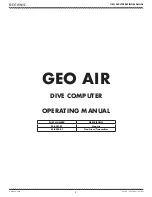
Maintenance
49
ple, if the center electrode porcelain is very
white, this could indicate an intake air leak or
carburetion problem in that cylinder. Do not
attempt to diagnose any problems yourself.
Instead, take the outboard motor to a
Yamaha dealer. You should periodically re-
move and inspect the spark plug because
heat and deposits will cause the spark plug
to slowly break down and erode. If electrode
erosion becomes excessive, or if carbon and
other deposits are excessive, you should re-
place the spark plug with another of the cor-
rect type.
Before fitting the spark plug, measure the
electrode gap with a wire thickness gauge;
adjust the gap to specification if necessary.
When fitting the plug, always clean the gas-
ket surface and use a new gasket. Wipe off
any dirt from the threads and screw in the
spark plug to the correct torque.
NOTE:
If a torque-wrench is not available when you
are fitting a spark plug, a good estimate of
the correct torque is 1/4 to 1/2 a turn past fin-
ger-tight. Have the spark plug adjusted to the
correct torque as soon as possible with a
torque-wrench.
EMU28962
Checking fuel system
WARNING
EWM00060
Gasoline and its vapors are highly flam-
mable and explosive. Keep away from
sparks, cigarettes, flames, or other
sources of ignition.
WARNING
EWM00910
Leaking fuel can result in fire or explo-
sion.
●
Check for fuel leakage regularly.
●
If any fuel leakage is found, the fuel
system must be repaired by a qualified
mechanic. Improper repairs can make
the outboard unsafe to operate.
Check the fuel lines for leaks, crack, or mal-
function. If a problem is found, your Yamaha
dealer or other qualified mechanic should re-
pair it immediately.
Standard spark plug:
BR8HS-10
1. Spark plug gap
2. Spark plug I.D. mark (NGK)
Spark plug gap:
0.9–1.0 mm (0.035–0.039 in)
Spark plug torque:
25.0 Nm (18.4 ft-lb) (2.55 kgf-m)
















































